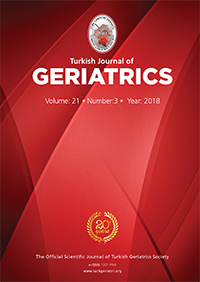Materials and Method: Patients aged ?65 years who were diagnosed with brucellosis and hospitalised between January 2012 and October 2017 were retrospectively evaluated for demographic characteristics and clinical, epidemiological and laboratory parameters.
Results: The study included 71 geriatric patients [29 male (40.8%) and 42 female (59.2%)]. The mean age was 70.64┬▒6.5 years. Twenty-four patients had acute, thirty had sub-acute and nine had chronic brucellosis, whereas eight had relapsed disease. Most common symptoms were fatigue and back pain. Most common clinical signs were organomegaly and fever. Wright and Coombs test results and blood cultures were positive in 76%, 22.5%, and 19.7% of patients, respectively. Focal involvement was detected in 36 (50.7%) patients. The most commonly preferred treatment combination was rifampicin/doxycycline.
Conclusion: Brucellosis can present with non-specific clinical signs in the geriatric population compared with those in the general population. This difference should be considered when treating geriatric patients, particularly in areas endemic for brucellosis.
Keywords : Geriatrics; Brucellosis; Complications; Prognosis
